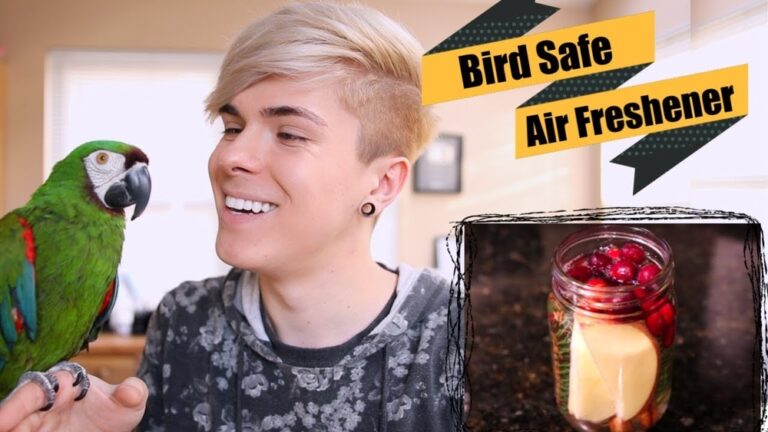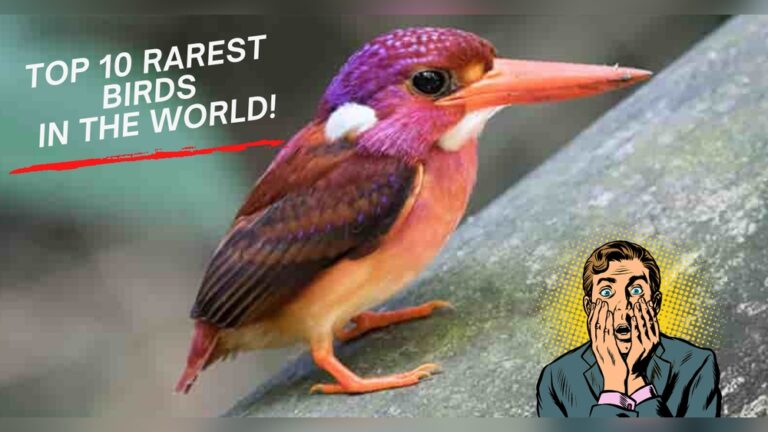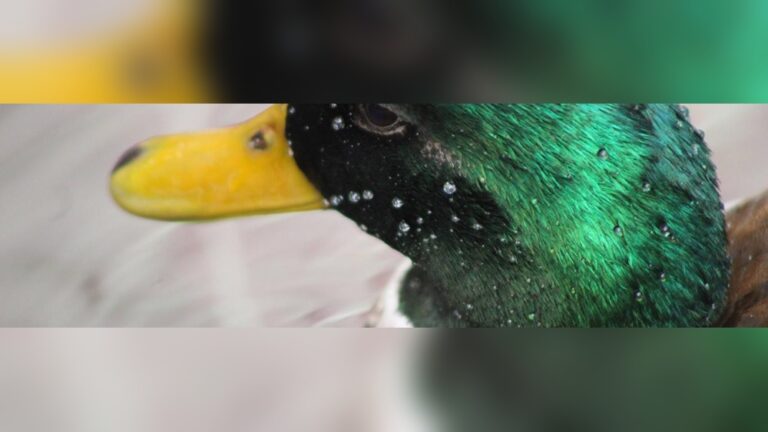Do Fake Owls Keep Hawks Away
Are hawks swooping around your yard, making you worry about your smaller birds or pets? You might have heard that fake owls can scare hawks away.
But do these plastic predators really work, or are they just garden decorations? If you want to protect your outdoor space without spending a fortune or setting up complicated traps, understanding how fake owls affect hawk behavior is key. Keep reading to find out if this simple solution could be exactly what your yard needs.

Credit: www.amazon.com
How Hawks Hunt
Hawks are skilled hunters. They use sharp eyes to find prey from high places. Their hunting style is quick and precise. Hawks blend patience with sudden action. They watch and wait. Then, they strike fast to catch their meal.
Understanding how hawks hunt helps to see why fake owls might or might not scare them away. Their behavior and choice of prey play a big role in this.
Hawk Behavior Patterns
Hawks often hunt during the day. They soar or perch in trees and poles. From there, they scan the ground for movement. They prefer open spaces for clear views. Hawks use surprise to catch prey off guard. They swoop down quickly to grab food with strong claws. Hawks may return to the same hunting spots regularly. Their routines depend on food availability and safety.
Preferred Prey And Hunting Grounds
Hawks eat small animals like mice, rabbits, and birds. They choose areas where these animals live. Fields, edges of forests, and parks are common hunting grounds. Hawks look for places with little cover for prey. They avoid densely wooded areas. These spots make hunting easier and safer. The type of prey affects where hawks fly and hunt daily.
Role Of Owls In Ecosystems
Owls play an important role in many ecosystems. They help keep the balance by controlling populations of small animals. This control affects the food chain and the health of the environment.
Owls hunt rodents, insects, and other small creatures. These prey animals can damage crops and spread disease. By reducing their numbers, owls protect plants and other animals.
Owl Predation And Territory
Owls are skilled hunters with sharp vision and silent flight. They often hunt at night, catching prey unaware. Each owl has its own territory to find food and raise young.
They mark their territory by calling and defending it from other owls. This helps reduce fights and keeps a balance between predators. The size of the territory depends on food availability.
Natural Hawk-owl Interactions
Owls and hawks sometimes share the same area. They both hunt small animals but at different times. Owls mainly hunt at night, hawks mostly during the day.
Hawks may see owls as competition or threats. Some hawks attack owls to defend their space. Yet, both birds help control prey populations and support healthy ecosystems.
Effectiveness Of Fake Owls
Fake owls are a common tool used to keep hawks away from gardens and yards. Their effectiveness varies depending on several factors. Some people find them helpful, while others see little change in hawk activity. Understanding how fake owls work can help set the right expectations.
Types Of Decoy Owls
Decoy owls come in different shapes and sizes. The most common type is a stationary plastic owl. Some have realistic colors and details to look like a real owl. Others have moving parts, such as rotating heads or flapping wings, to increase their realism. There are also electronic owls that glow or make sounds to scare hawks. The type of decoy affects how hawks respond.
Behavioral Responses Of Hawks
Hawks are smart birds. They learn quickly if a fake owl is not a real threat. At first, they may avoid the area near the decoy. Over time, many hawks realize the owl is fake and ignore it. Some hawks become curious and come closer to investigate. The effectiveness of a fake owl depends on changing its position often. This helps keep the hawks uncertain and cautious.
Factors Influencing Hawk Deterrence
Several factors affect how well fake owls keep hawks away. Not all decoys work the same. Their success depends on where and how you place them. The time of year and the environment also play a role. Understanding these elements helps improve hawk deterrence.
Hawks are smart birds. They may get used to a still decoy quickly. Moving the fake owl or changing its position can keep hawks cautious. The right setup can make a big difference.
Placement And Movement Of Decoys
Place fake owls where hawks often fly or rest. High places like rooftops or tall poles work best. Make sure the decoy is visible from many angles. Movement adds realism. Use a decoy that can turn or sway in the wind. Change the decoy’s position every few days. This stops hawks from getting used to it.
Environmental And Seasonal Variables
Hawk activity varies with seasons. During nesting time, hawks are more protective and aggressive. Fake owls may work better then. Weather also matters. Bright sunlight makes decoys more visible. In heavy rain or fog, hawks rely less on sight. The local environment affects hawk behavior. Open fields and forests create different challenges for deterrence. Adjust decoy use based on these conditions.
Alternative Hawk Deterrent Methods
Fake owls may not always keep hawks away. Birds can get used to them fast. Using other methods can help protect your garden or property better. These alternatives use different ways to scare or stop hawks. Try mixing methods for better results.
Visual Scare Devices
Visual devices catch hawks’ attention and scare them off. Moving objects like reflective tape or spinning pinwheels work well. Bright colors and shiny surfaces create flashes that hawks dislike. Some use inflatable balloons with eyes to mimic predators. Change the device’s position often to keep hawks guessing.
Sound-based Repellents
Sound can frighten hawks and make them leave. Devices that play predator calls or distress signals are useful. Loud noises like alarms or banging can startle hawks. Use sounds at different times to avoid hawks getting used to them. Keep sound levels safe for neighbors and pets.
Habitat Modification
Changing the environment can reduce hawk visits. Remove food sources like rodents or bird feeders that attract prey. Trim tall trees or bushes where hawks like to perch. Keep open areas clear to limit hawks’ hunting spots. Making the area less inviting helps keep hawks away.

Credit: www.amazon.com
Real-life Experiences And Studies
Many people use fake owls to keep hawks away from their gardens or farms. These plastic owls look like real predators. Some believe they scare hawks off. Others are unsure if they really work. Real-life experiences and studies help us understand how well fake owls work.
People and researchers have tested fake owls in different places. Some saw good results. Others found problems. Let’s explore both sides.
Success Stories
Some gardeners report fewer hawks after placing fake owls. They say hawks avoid their area. Farmers also share positive feedback. Fake owls scare hawks from attacking smaller birds. In some cases, fake owls protect poultry well. The sight of a large bird can stop hawks.
Studies show hawks may leave an area if they think a strong predator is near. Fake owls create this illusion. This helps protect smaller animals. Some people move the owl around. This keeps hawks confused and away longer.
Limitations And Failures
Fake owls do not always work. Hawks can get used to the fake owl. After a while, they see it is not real. Then they return to the area. Some studies found no change in hawk behavior. Static fake owls lose their effect quickly.
Placing the owl in one spot is not enough. Hawks are smart and learn fast. Fake owls also do not scare all hawk species. Some hawks ignore the fake predator. The effectiveness depends on many factors.
Real owls make noise and move. Fake owls do not. This difference reduces their power. Many experts suggest combining fake owls with other methods. Moving the owl or adding sounds may help. Alone, fake owls are not a perfect solution.

Credit: www.birdbgone.com
How Smart Pets Lover Can Help You with Do Fake Owls Keep Hawks Away
Learning from Nature: Practical Insights on Using Fake Owls Against Hawks
Understanding how hawks hunt and the role of owls in ecosystems offers valuable lessons for anyone curious about whether fake owls keep hawks away. While studies and real-life experiences suggest that these decoys can provide temporary deterrence, factors like placement, movement, and local hawk behavior play crucial roles in their effectiveness.
For pet parents and bird enthusiasts, this means experimenting with different strategies—such as combining fake owls with other deterrents—to create a safer environment for your feathered friends. Observing hawk activity patterns can also help tailor your approach, making it more responsive and humane.
- Rotate fake owl locations regularly to prevent hawks from getting used to them.
- Combine visual deterrents with sound devices for enhanced protection.
- Monitor local hawk behavior to understand when deterrents are most needed.
At Smart Pets Lover, we believe every pet parent should feel confident in protecting their animals with knowledge and care. If you want more tips on managing wildlife interactions or have questions about bird safety, feel free to reach out to us anytime—because where every wag, purr, and chirp tells a story, your pet’s well-being is part of ours.
Frequently Asked Questions
Do Fake Owls Effectively Scare Hawks Away?
Fake owls can deter hawks temporarily by simulating a predator’s presence. However, hawks may become accustomed to static decoys, reducing long-term effectiveness. Moving or repositioning the fake owl often improves results.
How Long Do Fake Owls Repel Hawks?
Fake owls typically repel hawks for a few days to weeks. Hawks learn the decoy is harmless over time, so regular repositioning is necessary to maintain effectiveness.
Where Should I Place A Fake Owl To Keep Hawks Away?
Place fake owls in visible, elevated spots near areas hawks frequent. Ideal locations include rooftops, trees, or garden poles. Proper placement maximizes the decoy’s impact on hawk behavior.
Can Fake Owls Protect Gardens From Hawk Attacks?
Fake owls may reduce hawk visits to gardens, helping protect small pets and birds. They act as a visual deterrent but should be combined with other methods for best results.
Conclusion
Fake owls can help keep hawks away, but not always. Hawks may get used to the fake owl over time. Moving the owl often can make it more effective. Combining fake owls with other methods gives better results. Watching your yard helps you understand what works best.
Patience and small changes matter in keeping hawks away. Try different ideas and see what fits your space. Stay aware and protect your birds or garden well.







